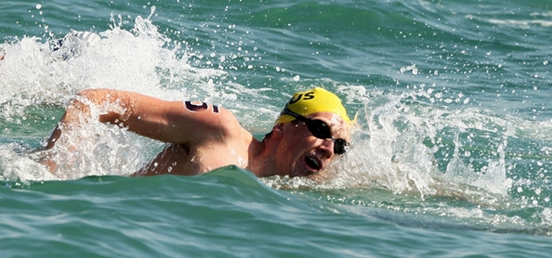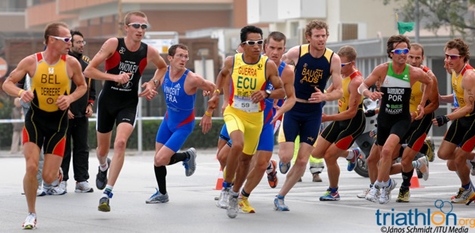Your Resting Pulse Rate is an Important Measurement of Health, Fitness and Longevity
The purpose of this article is to (i) educate you on how your resting heart or pulse rate is a key measurement of your health, fitness level and lifespan, (ii) provide you with tips on how to lower your resting pulse rate (iii) teach you how to Measure your resting pulse rate, (iv) provide you with a Log to keep a record of your resting heart rate, and (v) help you be healthier and, if an athlete, improve athletic performance and reduce injury risk!!
See resting heart rate chart below.
Why Track Resting Heart Rate
As your resting pulse rate is a key vital sign and an important indicator of good health, it is important to be aware of and track your resting pulse rate for the following reasons:
- -Longevity. At creation, each of us inherit a certain level of energy. How we manage that energy determines our lifespan. Those who have faster heart rates are using their heart beat allotment faster, therefore likely having a reduced lifespan.
- -Faster Beat and Heart Attack Risk. A faster heart beat rate is a key indicator for the risk of heart attack. Researchers have found that patients whose resting heart rate was above 70 beats per minute had significantly higher incidence of heart attacks.
- -Strong Heart. A slower heart beat generally indicates a stronger heart that works less hard to pump blood throughout the body.
- -Energy Levels. A slower heart rate generally indicates a longer, higher and more enduring energy levels
- -Metabolic Efficiency. A slower required heart beat is a general indicator of an efficient metabolism.
- -Athletic Endurance Fitness. A slower heart beat generally indicates aerobic fitness. Also, how quickly an athlete's heart beat recovers to lower beats per minute after vigorous exercise is an important indicator of aerobic fitness.
Managing your resting heart rate can be one of the most important things you can do to improve your lifespan and, for athletes, improve athletic performance.
What Impacts Resting Pulse Rate?
1. GOOD SLEEP. Have a routine of regularly getting good sleep. Regular disruptive or insufficient sleep is a significant contributor of a higher resting pulse rate. Full sleep enables the body to rest, repair and recovery. See here for 12 Tips to Good Sleep.
2. REGULAR SUSTAINED AEROBIC EXERCISE. Regular sustained (at least an hour) of brisk aerobic exercise three times a week will help you maintain a lower resting pulse rate. Daily is better. Cycling, Hiking, walking, Swimming, Running are all good aerobic exercises to maintain a healthier resting pulse rate. Your aerobic exercise should be at a level to increase your heart rate. Researchers have found maintaining a Log encourages sticking with an exercise routine!
3. KEEP ARTERIES CLEAR THROUGH A NUTRITIOUS DIET. The clearer the arteries, the easier your blood with flow throughout your body. A healthy balanced diet consistency of natural organic unprocessed foods will help keep your arteries clear. It is also helpful to limit intake of excessively salty foods. See here for How to Naturally Maintain Clear Arteries.
4. REDUCE and MANAGE EXCESS STRESS and ANXIETY. Stress can place extra burden on the heart and cardiovascular system. Living a Simple Lifestyle, learning techniques such as Yoga for Stress Management and appreciating the Vigor in Uncertainty are some effective things we can do to help keep our resting pulse rate in check.
5. STAY HYDRATED. Good hydration is key to keeping our blood at just the right viscosity to easily flow through our body, thus keeping our resting pulse rate in check. See Hydration Tips for Endurance Athletes for good information on hydration for everyone and under all weather conditions.
6. DON'T SMOKE. Smoking is hard on the heart and cardiovascular system. See Tips to Quit Smoking.
7. MANAGE WEIGHT. Maintaining a good weight helps the body be efficient in the distribution of blood placing less stress on the heart.
8. LONG DEEP BREATHING. Long slow and deep breathing is a key way to reduce your resting heart rate. See Breathing Technique for Optimum Health
How and When to take a Resting Pulse Rate Measurement
Our resting heart rate is your heart rate when you are at rest, awake but lying down, and not having immediately exerted yourself. Resting pulse rate is measured by beats per minute (bpm). This measurement is best taken first thing in the morning before you get out of bed. Typical healthy resting heart rate in adults is 60–80 bpm. Note however that conditioned athletes often have resting heart rates below 60 bpm. Tour de France cyclist Lance Armstrong has a resting HR around 32 bpm, and it is not unusual for people doing regular exercise to have resting pulse rates below 50 bpm. See Video - How to Take Resting Pulse Rate!
The neck or wrist is a good place to find an artery with an easily noticable to the touch pulse to take your pulse rate with your finger!
Value in Maintaining a Record of your Resting Heart Rate
It is very valuable to maintain a record of your resting pulse rate throughout your life as it can be an good hint and indicator of your overall health!
1Vigor has a cool free Log to track resting heart rate, as well as body fat %, hours of sleep, weight and aerobic activities such as walking, hiking, running, swimming, cycling and kayaking. The Log can also track yoga, pushups, situps, pullups and weight lifting.
It is a good idea to measure and record your resting pulse rate at least once a week!
Tips how Endurance Athletes can Incorporate Monitoring Resting Heart Rate into Your Training
Here are some Tips to Endurance athletes on how managing your resting pulse rate can improve performance:
1. Take Resting Pulse Rate in the morning of a long workout day. Adjust your workout intensity if your resting pulse rate is too high that morning. A higher than average resting pulse rate may indicate a period of inadequate rest.
2. Monitor your Resting Pulse Rate during your Tapering Period prior to your Race. Adjust your tapering intensity in part based upon your resting pulse rate. Pre race excitement aside, it is best race morning to have your resting pulse rate within your usual low range. A higher resting pulse rate race morning may make for a long day.
3. Regularly Monitor your Resting Pulse Rate as a Way to Prevent Overtraining. Overtraining can lower your immune system, cause you to become ill and can increase your risk of injury. . . . all of which may cut into your training time. Your resting pulse rate is an excellent easy and quick indicator to prevent over training. It may also signal the need for more rest.
Resting Pulse Rate Chart
| Categories | Resting Pulse Rate |
| Babies to age 1 | 100 - 160 |
| Children aged 1 to 10 | 60 - 140 |
| Children aged 10+ and adults | 60 - 100 |
| Well-conditioned athletes | 40 - 60 |
A Pulse rate between 60-100 bpm is considered normal. Pulse rate helps assess the health of your heart. High pulse rate indicates your heart is beating faster than normal. High pulse rate at rest indicates that your heart has to work harder to pump blood into the arteries. However, low pulse rate (within the normal range) usually suggests that the heart is absolutely healthy. A healthy heart works slowly because it can pump blood into the arteries effortlessly.
More about Ralph Teller. See Ralph's 1Vigor Log Calendar.






